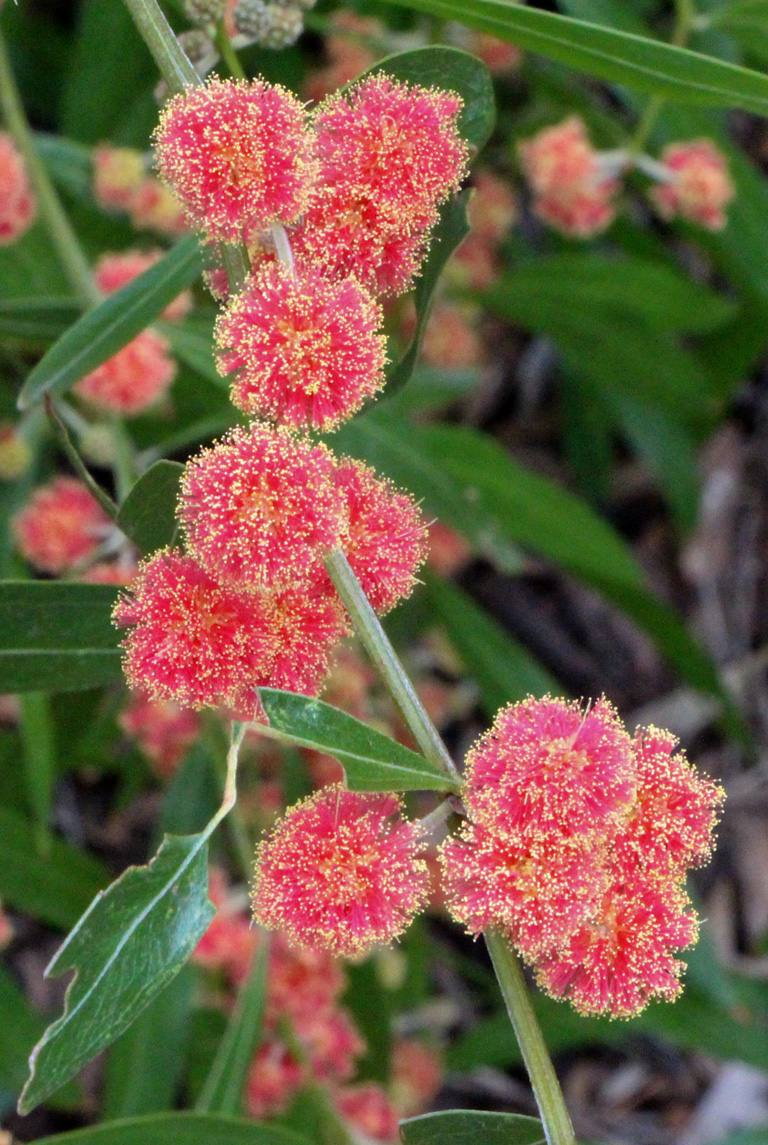Join
Membership of the Acacia Study Group is available to members of an ANPSA-affiliated Regional Society. If you are not a member of a Regional Society, please contact the Society located in your State or Territory for further information.
For more information or to join please send a request using the following form (please note that all fields are mandatory* – you may edit the ‘Message’ field if necessary).
Acacia Study Group Form
Signup form for the Acacia Study Group that sends a notification to the Study Group leader.
Newsletters
Regular newsletters are published several times per year to record activities and experiences of Group members in cultivating acacias, keeping up to date on scientific knowledge of the genus and reporting on field trips to various parts of Australia.
Almost all of the newsletters that have been published by the Group since its formation in 1961 are provided here as an archive, although the six missing issues in the First Series are believed to have been lost.
(Note: Newsletters are in pdf format and will require a PDF Reader to view them. Free readers include Foxit Reader and Adobe Acrobat Reader).
****Click here to access the Acacia Study Group Newsletters*****
Acacia Plant Profiles
Profiles of a number of Acacia species have been incorporated into the Acacia section of the website, which can be found under ‘Plant Guides > Common Plant Genera and Families’ . Each profile includes a photograph and information on natural distribution, taxonomy, cultivation and propagation.
Click here to view the Acacia profiles
The Acacia section of the website also covers the characteristics, cultivation and propagation of acacias generally, and include references to other relevant resources.
Acacia Resources
These are a few internet and other resources on Acacia that might prove useful, including links to:
- WATTLE ver 2.2 – an interactive, web-based plant identification system.
- World Wide Wattle – authoritative information relating to species of Acacia worldwide.
- Wattle Web – a guide to acacias of New South Wales.
Books:
- Armitage, I (1977), Acacias of New South Wales, Society for Growing Australian Plants, NSW Region.
- Elliot, W. R and Jones D (1982), The Encyclopaedia of Australian Plants, Vol.2, Lothian Publishing Company Pty Ltd, Melbourne.
- Hitchcock, M (1991), Wattle, Australian Government Publishing Service.
- Pedley, L (1987), Acacias in Queensland.
- Rogers, F, Field Guide to the Wattles of Victoria.
- Simmons, M (1981), Acacias of Australia, Vol.1, Thomas Nelson Australia.
- Simmons, M (1987), Growing Acacias, Kangaroo Press.
- Simmons, M (1988), Acacias of Australia, Vol.2, Penguin Books Australia.
- Tame, T (1992), Acacias of South-east Australia, Kangaroo Press.
- Wibley, D (1980), Acacias of South Australia, South Australian Government Printer.
Journals:
Several issues of the Society’s journal “Australian Plants” are particularly useful for those interested in Acacia.
- Vol 10, No.82 March 1980; Microwave treatment of Acacia seed.
- Vol 11, No.91 June 1982; Wattles of the Grampians.
- Vol 14, No.114 March 1988; Outline of characteristics of Acacia.
- Vol 17, No.134 March 1993; Top End wattles for gardens.
- Vol 18, No.147 June 1986; Vegetative propagation of wattles.
- Vol 21, No.169 December 2001; Acacia leprosa ‘Scarlet
Internet:
- On-Line Key to Acacia – WATTLE ver 3 This is an interactive, web-based service to help people identify any species of wattle and access further information on a particular species. This link leads to the Lucid Key Server – to find the Acacia key, use the ‘Search’ menu option on that page to search for Acacia.
- Acacia – Australian National Botanic Gardens. Includes many species and photos.
- Acacia – An Introduction
- Acacia Seed Raising
- A Simple Botany of Wattles
- Acacia leprosa “Scarlet Blaze” – a red-flowered wattle!
- Acacia leprosa and “Scarlet Blaze”
- Acacia Name Issue
- Another view on Racosperma.
- Cheery Acacias
- Dead Finish – Acacia tetragonaphylla
- Edible Acacias
- Golden Wattle – Acacia pycnantha, Australia’s floral emblem.
- Growing Native Plants – a series of plant profiles by the Australian National Botanic Gardens; includes a number of acacias.
- If You Start Sneezing don’t Blame the Acacias
- Mulga – Acacia aneura
- Proposed Name Changes in Acacia
- Wattles and Bushfires
- Wattle Day – a Short History
- Wattle Day Association
- Wattle It Be? By Seed or Cuttings? – Tradition says that wattles can’t be easily grown from cuttings. Stupid tradition….
- World Wide Wattle An extensive site designed to inform, educate and promote the conservation, utilisation and enjoyment of Australian Acacia species.
 Australian Native Plants Society (Australia)
Australian Native Plants Society (Australia)